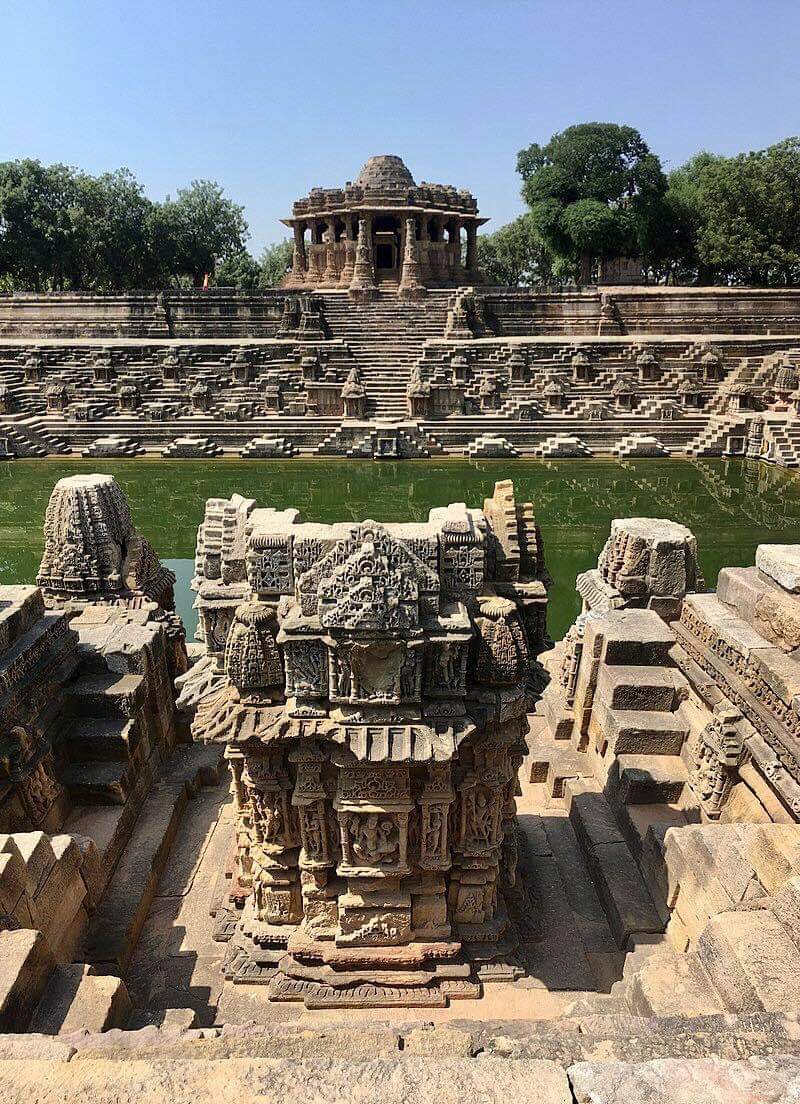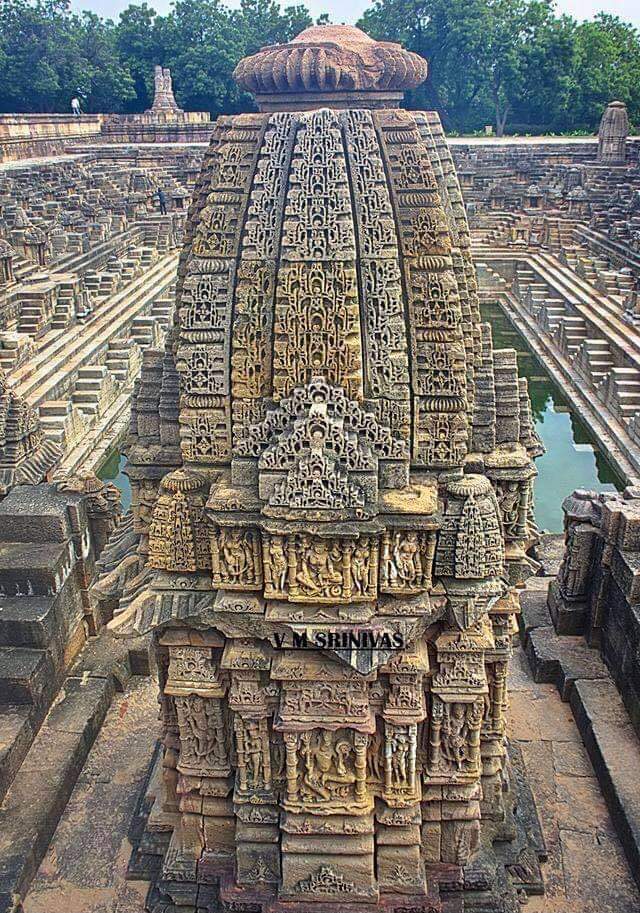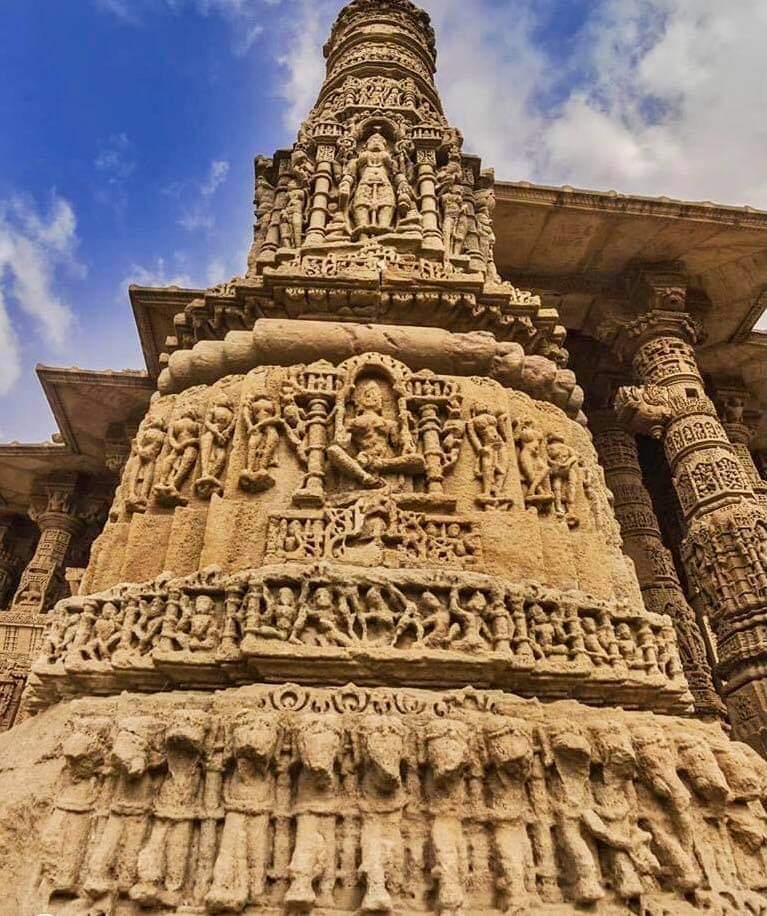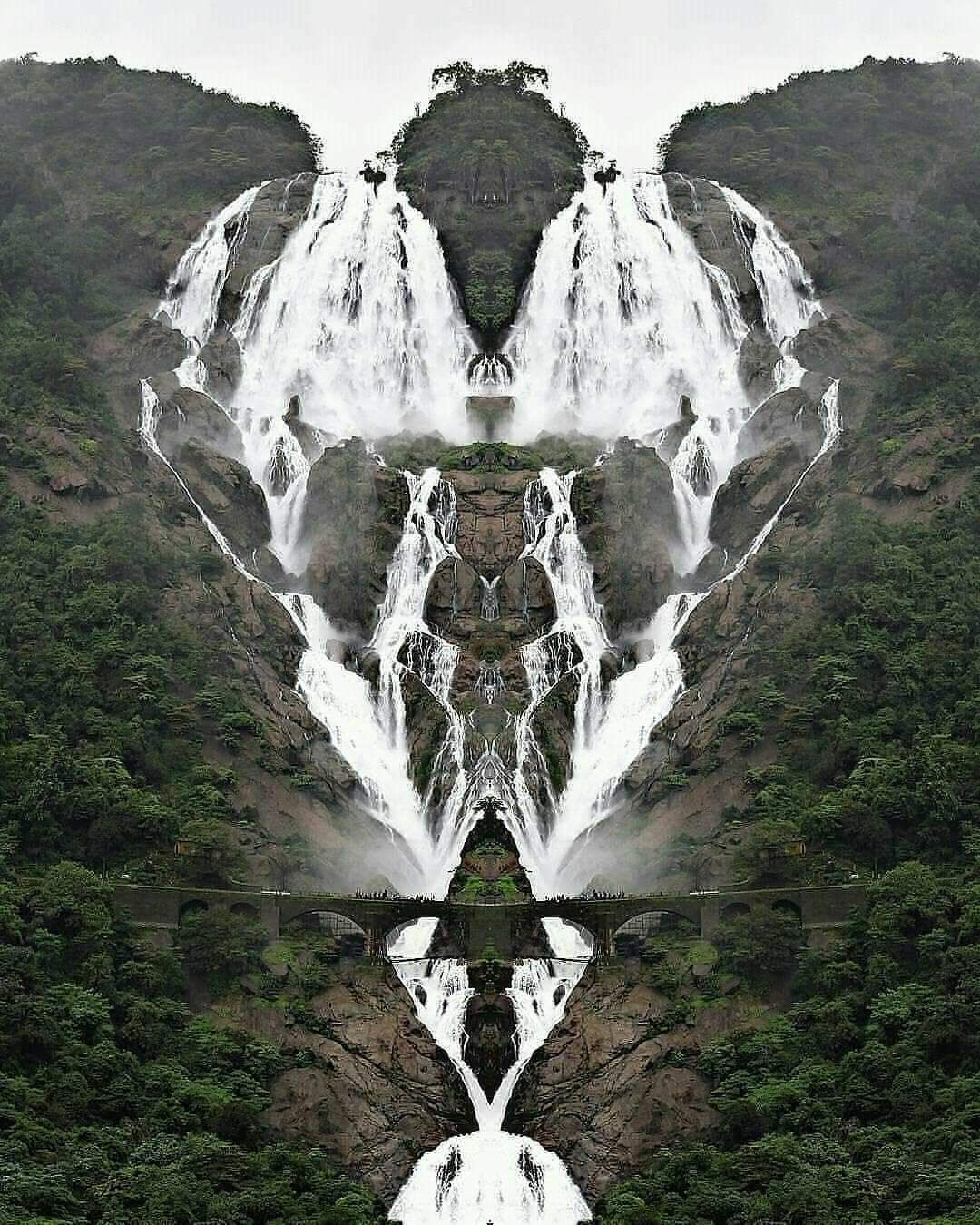The SUN Temple in Modhera, Gujarat, India
- Sun Temple at Modhera - Architectural Marvel of the Solankis.
- The Sun Temple at Modhera is an architectural marvel. It was built in the Mara-Gurjara or Chalukya style.
- The Temple complex consists of three axially aligned components - the garbhagriha (Sanctum Sanctorum) in a hall (gudha mandapa), the assembly hall (Sabha mandapa or Ranga Mandapa) and a sacred reservoir (kunda). The sabhamandapa is not in continuation with gudhamandapa but is placed little away as a separate structure.
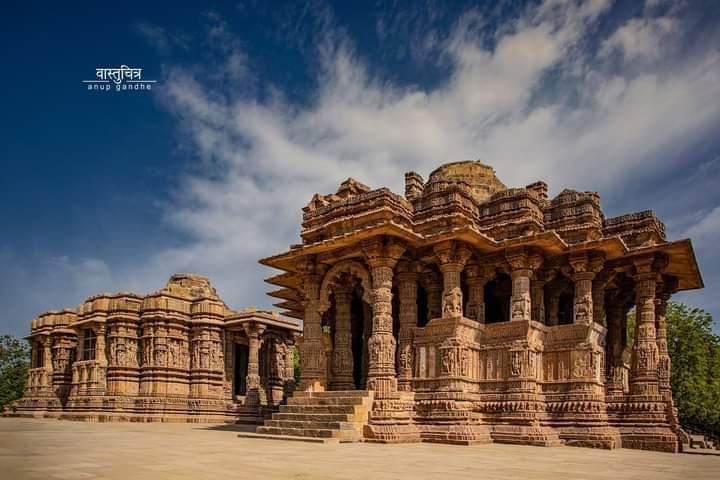

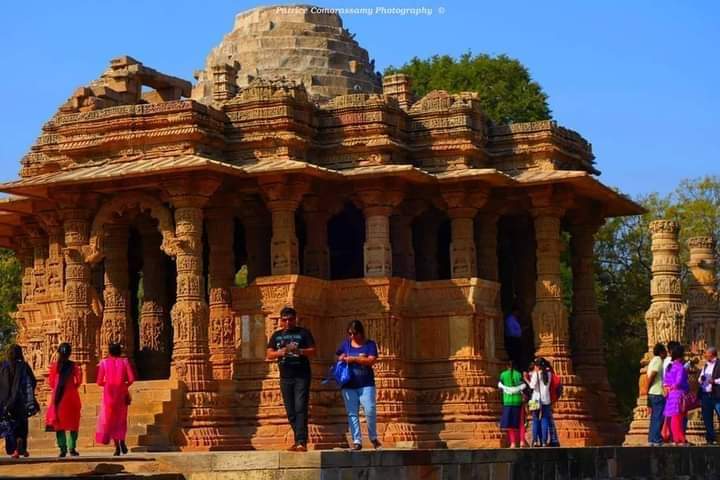
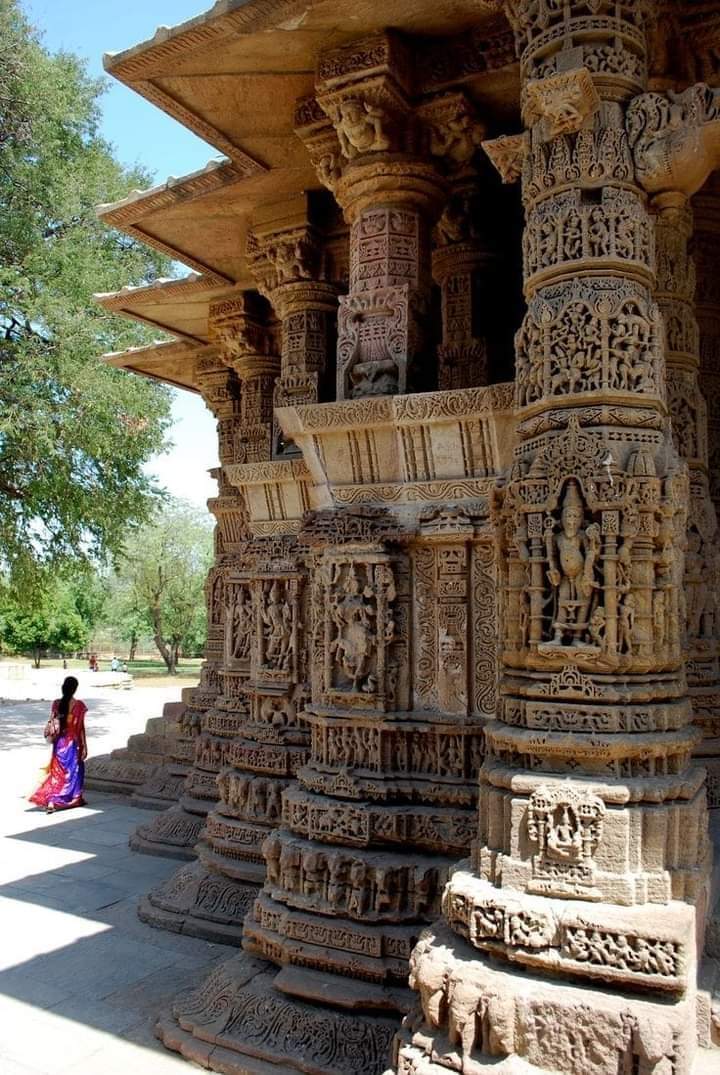
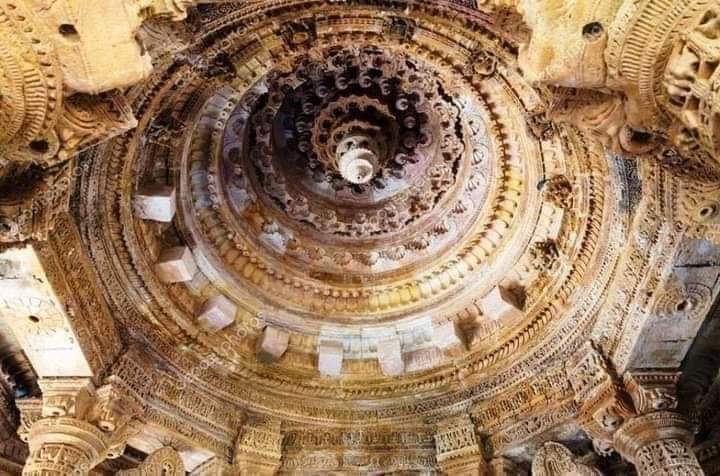
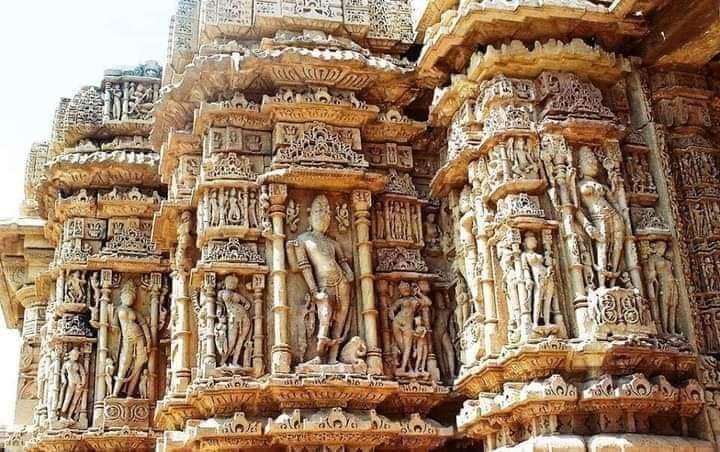
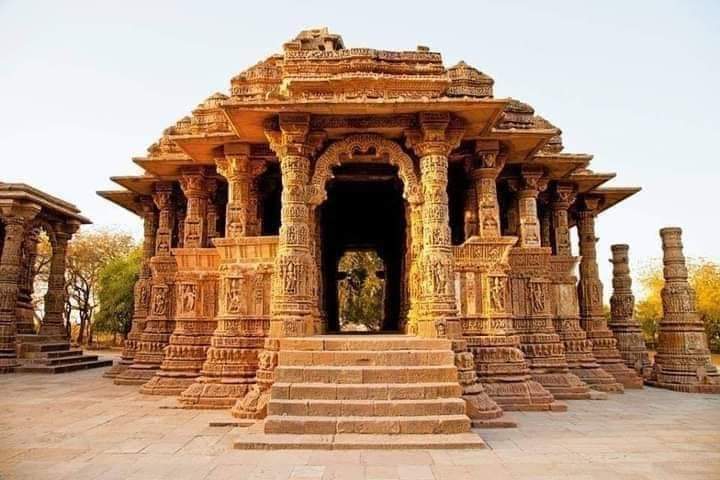
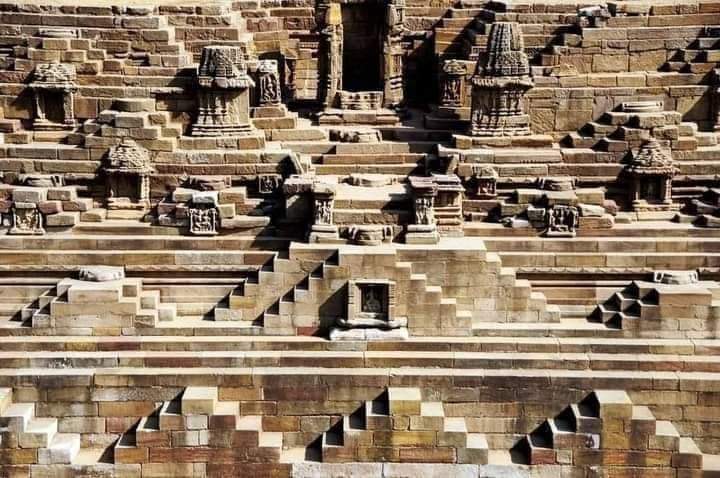
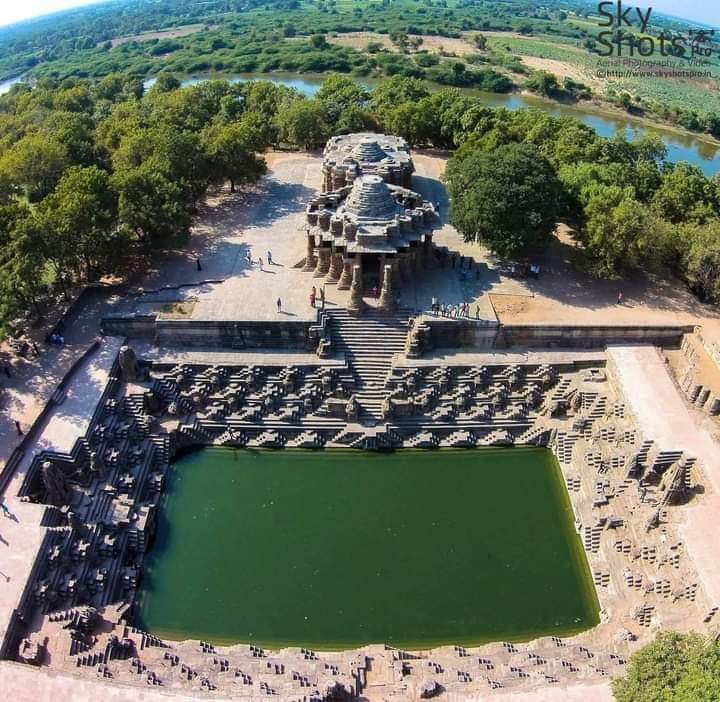
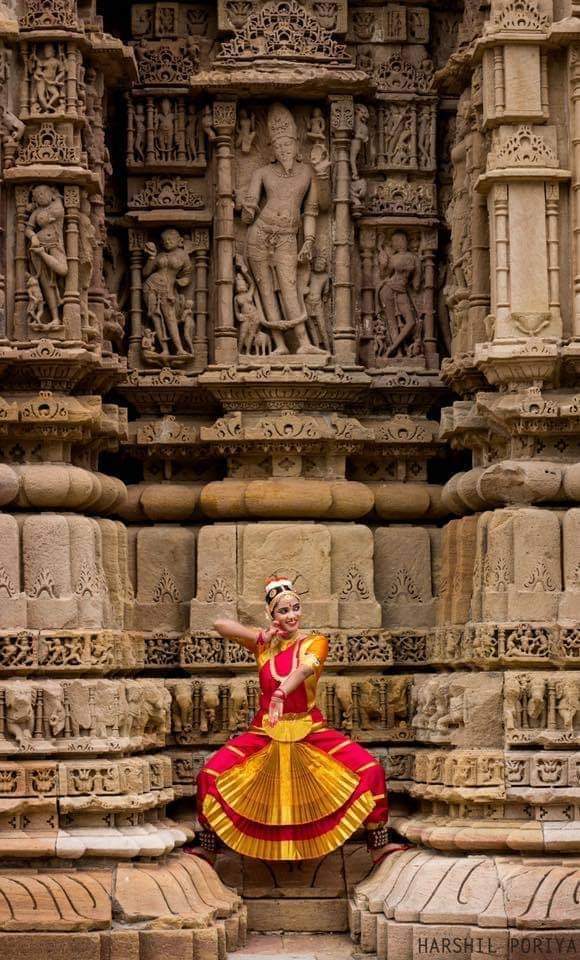
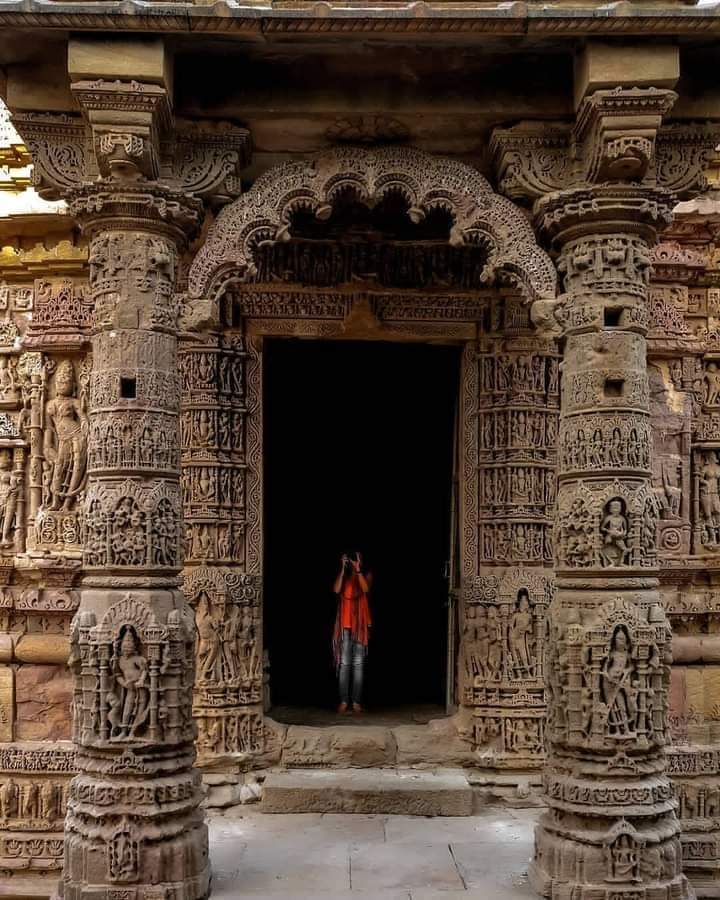
Sun Temple at Modhera - Architectural Marvel of the Solankis
- On the banks of Pushpavati river, located at Modhera village of Mehsana district, Gujarat, stands a marvellous Sun Temple. It was built by Bhimadev I of the Chaulukya or Solanki dynasty - one of the four agnikula Rajput dynasties, in 1026 AD. Agnikula Rajputs considered themselves the descendants of Surya (Suryavanshis), hence Surya was their family deity.
- The Sun Temple at Modhera is an architectural marvel. It was built in the Mara-Gurjara or Chalukya style. The Temple complex consists of three axially aligned components - the garbhagriha (Sanctum Sanctorum) in a hall (gudha mandapa), the assembly hall (Sabha mandapa or Ranga Mandapa) and a sacred reservoir (kunda). The sabhamandapa is not in continuation with gudhamandapa but is placed little away as a separate structure.
- The Temple is built on a raised platform that is in the shape of an inverted lotus. The Shikhara or Vimana above the garbhagriha and the Guda Mandapa no longer exists but the 'Toranas' (Archways) that lead to the main halls overshadow the absence of spires or shikhars. The exterior walls are engraved with intricate carvings, boasting about the mastery of art in those times. Every single inch of the structure is covered with the sculptural patterns of Gods, Goddesses, birds, beasts and flowers.
- Surya Kund is a deep stepped tank in the front of the temple. It has pyramidal steps forming intriguing geometric patterns. The most distinguishing feature of these steps is the presence of numerous small shrines. There is a total of 108 shrines dedicated to Lord Ganesha, Lord Shiva, Sheetala Mata and many others. On the step directly opposite the temple, there is a temple dedicated to Sheshashayi vishnu (Vishu lying on Shesha Nag).
- The Sabha Mandapa is an octagonal assembly hall where religious gatherings and conferences were conducted. This hall is open from all the four sides and has 52 delicately carved pillars. The intricate carvings depict scenes from the Ramayana, Mahabharata and scenes from the life of Lord Krishna.
- The Gudha Mandapa is the hall connecting the garbhagriha. It is built on a plinth that is designed like an inverted lotus. It was roofed by a vimana which probably arose in a concentric manner which no longer exists. The pillars and the walls have exquisite carvings with jewellery level precision. The sculptures depict the aspects of human life like the vicious circle of birth and death, dancers, gods and goddesses etc. Most prominent among them are the figures of Surya in standing position with two arms holding lotuses and driven by seven horses.
- The garbhagriha is square in shape. It once housed the Vigraha of the Murti of the Sun God, Surya. The Vigraha no longer exists. The walls inside the shrine are plain while the outer walls are decorated. The doorway has carved figures of seated Surya in panels surrounded by dancers and amorous couples. The sanctum sanctorum is designed in a way that the first rays of rising sun lit up the image of Surya during solar equinox days and on summer solstice day, the sun shines directly above the temple at noon casting no shadow. It proves beyond doubt the architectural and astronomical genius of the time.
